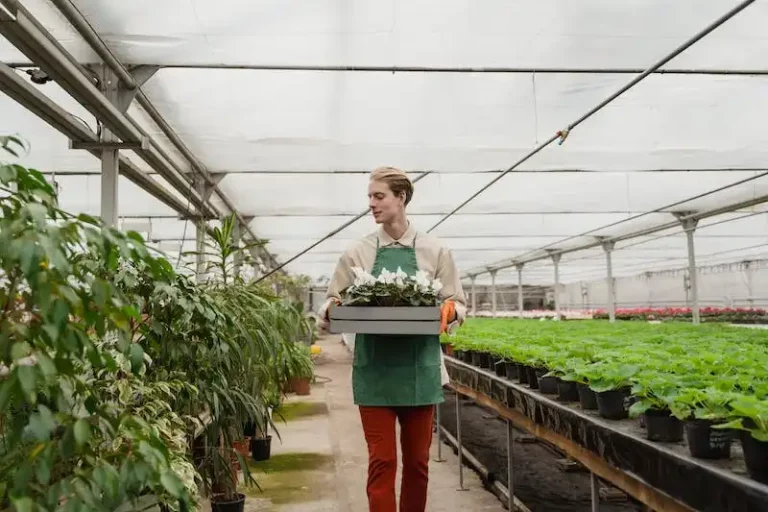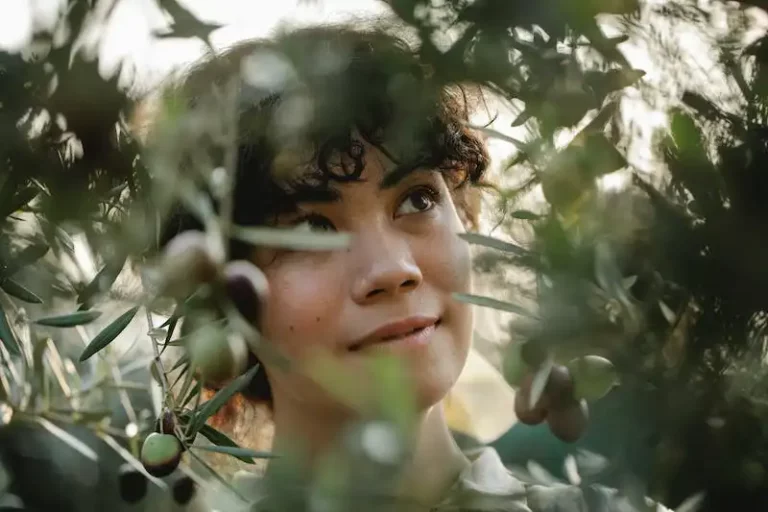When you’re going on a holiday, it’s important to make sure your indoor plants are properly watered to ensure their health and growth while you’re away. There are several solutions you can employ to ensure your plants stay hydrated even in your absence.
One of the best solutions is to use a self-watering system. These systems are designed to release water evenly into the pot, ensuring your plants get the water they need at the right times. There are commercially available self-watering systems that you can purchase, or you can create your own DIY system using simple materials.
Another option is to ask a friend or neighbor to water your plants while you’re away. This can be a great solution if you have someone who is willing and able to take care of your plants. Make sure to provide them with clear instructions on how much water each plant needs and how frequently it should be watered.
If you don’t have anyone to water your plants or prefer a more automated solution, you can invest in an irrigation system. These systems can be set up to water your plants at specific times and in specific amounts, ensuring they receive the right amount of water while you’re away.
For plants that don’t require as much water, such as cacti and succulents, you can water them thoroughly before you leave and place them in a location with indirect light and low humidity. This will help them stay hydrated for longer periods of time and reduce the risk of overwatering.
If you’re hesitant to try any of these solutions, you can also try the upside-down pot trick. Simply place a water-filled pot upside-down in your plant’s pot. As the soil dries, it will draw water from the upside-down pot, ensuring the plant stays hydrated while you’re away.
Regardless of which method you choose, it’s important to check your plants’ water levels before you leave and adjust accordingly. Different plants have different water needs, so it’s important to know how much water your specific plants require and adjust your watering schedule accordingly. This ensures that your plants stay healthy and hydrated even when you’re not around to water them.
6 Tips To Properly Water Your Plants
When it comes to caring for indoor plants, proper watering is one of the most important things to consider. Without the right irrigation, your plants can suffer and even die. To help guide you in watering your plants correctly, here are six tips to keep in mind.
1. Know what your plants need
Each plant has different watering requirements, so it’s crucial to understand what your specific plants need. Factors such as the type of plant, pot size, and even the humidity levels in your home can affect how frequently you should water your plants.
2. Water evenly
When watering your plants, make sure to distribute the water evenly and avoid overwatering certain spots. This ensures that all parts of the plant receive the necessary moisture and helps prevent root rot.
3. Consider wicking solutions
For the busy plant enthusiast, there are several wicking solutions available that can help with watering your plants. These include self-watering pots and wicking systems, which allow the plant to draw water from a reservoir as needed.
4. Use mulch to retain moisture
Mulch is a great option to help retain moisture in the soil. By placing a layer of mulch on top of the soil, you can slow down evaporation and keep the soil moist for a longer period. This is especially useful when you are away on vacation or unable to water your plants frequently.
5. Avoid overwatering
Overwatering is a common mistake that many plant owners make. It can lead to root rot, mold growth, and even attract bacteria. To avoid overwatering, always allow the top inch of the soil to dry out before watering again.
6. Check for wetness before watering
Before watering your plants, always check the soil’s moisture level. You can do this by sticking your finger about an inch into the soil. If it feels moist, wait a little longer before watering. However, if it feels dry, it’s time to give your plants a good drink.
By following these tips, you can ensure that your houseplants stay properly hydrated and thrive. Remember, proper watering matters, and the right waterings can make all the difference.
How To Water Your Plants Correctly
Knowing how to water your plants correctly is essential in keeping them healthy and thriving. Whether you’re going on vacation or simply busy with everyday tasks, ensuring your plants are properly watered is of utmost importance. When your plants suffer from underwatering or overwatering, they may develop issues such as gnats, root rot, or even death. Here are some tips to guide you in watering your plants the right way:
1. Understand the water requirements of your plants: Different plants have different watering needs, so it’s crucial to know the specific requirements of each plant you have. Some plants prefer moist soil, while others thrive in drier conditions. This knowledge will help you determine how often and how much to water.
2. Use the “inch” rule: As a general guide, stick your finger about an inch into the soil. If it feels dry at this depth, it’s time to water. In moist soil, hold off on watering until it dries out a bit.
3. Choose the right watering container: Porous containers such as clay pots allow water to evaporate faster, while plastic containers tend to hold moisture for longer periods. Consider the type of container you use to ensure it suits your plant’s watering needs.
4. Try the drip irrigation system: If you have multiple plants or are frequently away, installing a drip irrigation system can be a great option. These systems deliver water directly to the plant’s roots, preventing excess water runoff and ensuring proper hydration.
5. Check for signs of overwatering or underwatering: Monitoring your plants for signs of overwatering or underwatering is essential. Overwatered plants may have yellow leaves, wilting, or a foul smell, while underwatered plants may have drooping leaves and dry soil. Adjust your watering routine accordingly.
6. Consider self-watering solutions: There are commercially available self-watering pots and planters that provide plants with water as needed. These containers have a reservoir that holds water, allowing the plant to absorb it gradually over time.
7. Take into account environmental factors: Temperature, humidity, and sunlight levels all affect a plant’s watering needs. If the weather is hot or the humidity is low, you may need to water more often. Conversely, cooler temperatures or high humidity may require less frequent watering.
Remember, proper watering is crucial for the health and well-being of your plants. By following these tricks and guidelines, you can ensure your plants stay happy and hydrated, even if you’re away on vacation or have a busy schedule.
Tip 1: The plant’s pot matters
When it comes to watering indoor plants while you’re on vacation, one of the most important considerations is the type of pot your plant is in. Certain pots are more likely to result in dry soil, while others can help keep the soil moist for longer periods.
If you have plants in terracotta pots, for example, you may find that the soil dries out more quickly because terracotta is porous and absorbs water. On the other hand, plastic pots are less porous and can help keep the soil moist for longer.
Knowing the pot material will help you choose the best watering method for your specific plants. For plants that prefer moist soil, such as calatheas, plastic pots may be a better option. For plants that prefer drier soil, like succulents, terracotta pots may work well.
If you’re unsure which pot material is best for your plants, consider asking a gardening expert for advice. They can help you find the best watering method based on the specific needs of your indoor plants.
| Pros of Terracotta Pots | Cons of Terracotta Pots |
|---|---|
| – Allows air to reach the roots | – Absorbs water, resulting in quicker soil drying |
| – Promotes healthier root development | – May require more frequent watering |
| – Can prevent overwatering |
| Pros of Plastic Pots | Cons of Plastic Pots |
|---|---|
| – Retains water, keeping soil moist for longer | – May not allow proper airflow to the roots |
| – Requires less frequent watering | – Can lead to water saturation and root infections if overwatered |
| – Easy to clean and maintain | – May not be suitable for plants that prefer drier soil |
Choosing the right pot material is the first step in ensuring your indoor plants have the best chance of surviving without regular watering. Consider the specific needs of your plants and the watering tricks available, such as self-watering systems or watering spikes/globes, to find the most suitable solution for your plant’s pot.
Tip 2: Plants have different water needs
When it comes to watering your indoor plants, it’s important to remember that different plants have different water needs. Each plant has its own unique characteristics and growing conditions that affect how much water it requires.
Before you go on vacation, be sure to consider the specific water needs of your houseplants. Some plants, like cacti and succulents, can tolerate dry conditions and require less frequent watering. On the other hand, tropical plants like calatheas thrive in humid environments and need to be watered more often.
To determine the water needs of your plants, consider the following tips:
- Research each plant: Find out the specific water requirements of each plant you have. You can do this by consulting a plant care guide or asking a knowledgeable gardening enthusiast.
- Check the soil moisture: Before watering your plants, always check the moisture level of the soil. Stick your finger about an inch into the soil – if it feels dry, it’s time to water. If it feels moist, wait a few more days before watering.
- Take note of the plant’s growth stage: Some plants have different water needs depending on their growth stage. For example, during dormancy periods, plants require less water.
- Consider the humidity levels: If you live in a dry climate or have dry indoor conditions, your plants may need more frequent watering to compensate for the lack of moisture in the air.
- Use appropriate watering methods: Depending on the plant, you may need to use different watering techniques. For example, some plants like orchids prefer to be watered from below using a plastic tray, while others do well with overhead watering.
- Avoid overwatering: Overwatering is one of the most common mistakes indoor gardeners make. It can lead to root rot and other problems. Always allow the soil to dry out between watering sessions.
- Consider DIY solutions: If you’re going to be away for an extended period, you can try DIY solutions like a drip irrigation system or a self-watering container. These can help ensure your plants get the water they need while you’re away.
By considering the different water needs of your plants and implementing these tips, you can ensure their survival during your vacations or other times when you can’t be there to water them regularly.



